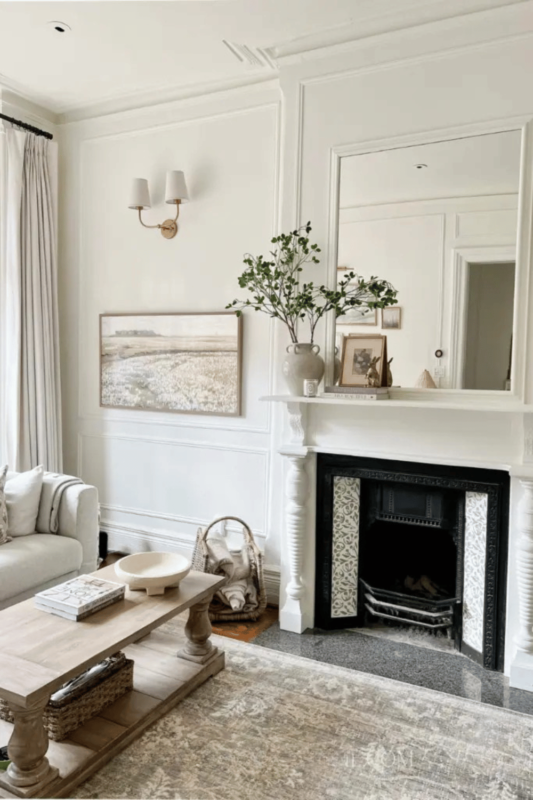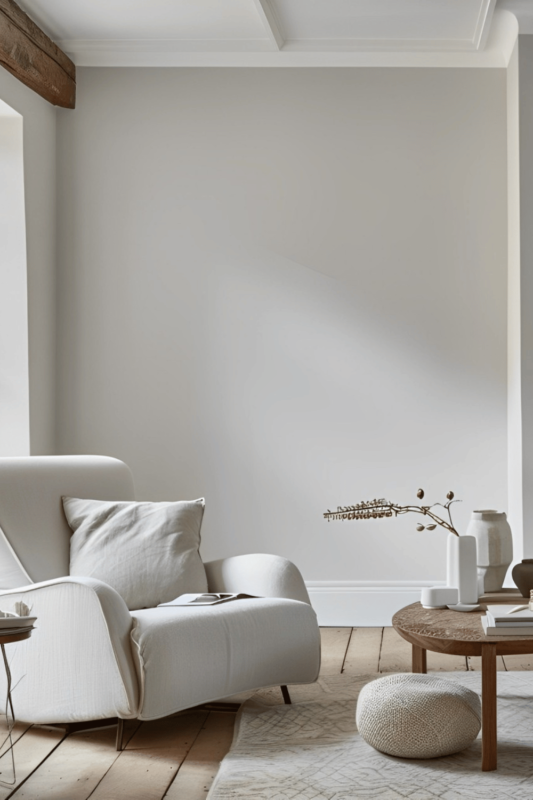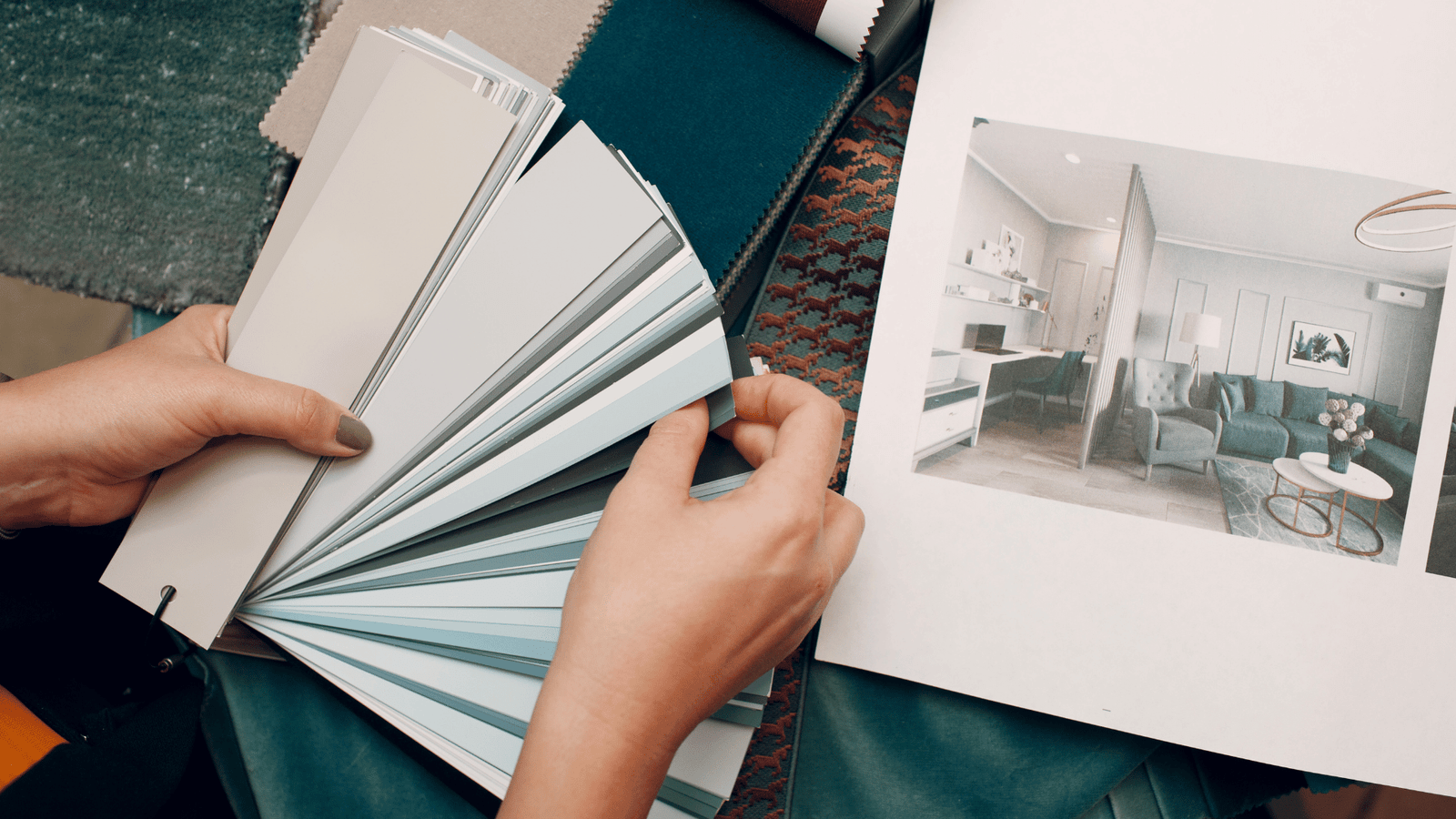Mistake choosing white paint can quickly turn your dream space into a design disaster. Discover 12 common pitfalls and expert tips to ensure you pick the perfect shade every time!
Introduction to Choosing White Paint
Choosing the right shade of white paint can significantly enhance the aesthetic of your space, particularly in areas like garden entrances where first impressions matter. White may seem straightforward, but its nuances—cool versus warm undertones, varying brightness levels, and even the finish—can dramatically alter how a space feels. For instance, a crisp, cool white might energize a contemporary garden entrance, while a soft, warm white can create an inviting and cozy atmosphere, drawing visitors into your home.
When selecting white paint for these outdoor transitions, consider how the surrounding elements—plants, materials, and even the natural light—will interact with your choice. The right white can serve as a backdrop that highlights vibrant blooms or complement rustic stone pathways, making your garden entrance a harmonious blend of nature and architecture. Additionally, testing samples on-site is crucial; the same shade can look entirely different in daylight compared to artificial lighting at night. Embrace the subtleties of white paint to elevate your garden entrance from mere functionality to a captivating welcome for your guests.

Mistake #1: Not Testing Samples Before Purchase
One of the most common pitfalls when selecting white paint is the failure to test samples before making a purchase. Many homeowners overlook the importance of sampling, often opting for a quick decision based on a tiny paint chip or an online image. However, the lighting in your space can dramatically alter how a paint color appears, especially with whites that can range from warm to cool undertones. Without testing, you risk ending up with a shade that clashes with your existing decor or feels stark and unwelcoming.
Imagine enhancing your garden entrances in a building with a fresh coat of white paint, only to realize that the chosen hue doesn’t complement the natural light or surrounding greenery. Sampling allows you to see how the paint interacts with different elements, such as flooring, furniture, and even outdoor light at various times of day. By taking the time to apply swatches in the actual environment, you can avoid costly re-painting and ensure that your choice creates the inviting atmosphere you envisioned for your space. Don’t underestimate this step; it could be the difference between a serene, cohesive look and a jarring misstep.
Mistake #2: Ignoring Lighting Conditions in Your Space
One of the most significant oversights when selecting white paint is failing to consider the lighting conditions in your space. Natural light can dramatically alter how a color appears throughout the day, shifting from warm to cool tones depending on the time and orientation of the sun. A bright, south-facing room may amplify the warmth of a soft cream, while a north-facing space could render it stark and uninviting. To avoid this pitfall, it’s essential to observe how the light interacts with your chosen hue at different times, ensuring it complements the ambiance you wish to create.
Moreover, artificial lighting plays a crucial role in how white paint reflects within your space. The type of bulbs you use—incandescent, LED, or fluorescent—can cast varying hues that might clash with your paint choice. Consider testing paint samples under both natural and artificial light to see how they harmonize. For those looking to enhance their interiors, incorporating thoughtfully designed garden entrances in a building ideas can also influence light flow and ambiance, creating a seamless transition between indoor and outdoor spaces. By understanding these dynamics, you can select a white that not only beautifies but also enhances the overall experience of your home.

Mistake #3: Overlooking Undertones of White Paint
When selecting white paint, many overlook the subtle undertones that can dramatically influence the overall ambiance of a space. White isn’t just white; it can range from cool, crisp shades with blue undertones to warm, creamy hues tinged with yellow or red. This nuanced palette can either harmonize or clash with your existing decor, making it essential to consider how natural and artificial light will interact with your chosen shade throughout the day. A white with cool undertones might feel refreshing in a sunlit room but could come off as stark and uninviting under incandescent lighting.
Moreover, the psychological impact of these undertones is often underestimated. Warm whites tend to create a cozy, inviting atmosphere, perfect for spaces meant for relaxation, such as bedrooms or living areas. In contrast, cooler whites can evoke a sense of cleanliness and modernity, making them ideal for kitchens or bathrooms. To truly appreciate the intricacies of white paint, it’s wise to test samples on your walls and observe them at different times of day—this practice allows you to see how the undertones shift and ultimately helps you create a harmonious environment that resonates with your personal style.

Mistake #4: Skipping the Finish Type Consideration
One of the most overlooked aspects when selecting white paint is the finish type, which can dramatically alter the final look and feel of your space. Many homeowners default to a single finish without considering how gloss, satin, or matte options will interact with light and texture in their rooms. A high-gloss white can reflect light beautifully, making a small space feel larger and more open, while a matte finish can provide a soft, cozy ambiance perfect for intimate settings. Neglecting this crucial decision can lead to unexpected results, like glare from the sun or an overly dull appearance.
Additionally, the finish affects not only aesthetics but also practicality. In high-traffic areas or spaces prone to moisture, such as kitchens and bathrooms, a more durable finish like semi-gloss or satin is essential for longevity and ease of cleaning. Meanwhile, bedrooms or living areas might benefit from a softer touch, where a flat or eggshell finish can mask imperfections on walls and create a serene environment. By skipping over this vital consideration, you risk compromising both the beauty and functionality of your home. So take the time to explore different finishes; your walls will thank you!

Mistake #5: Choosing Paint Based on Trends Alone
Choosing paint based solely on trends can lead to regret, especially in a space as personal as your home. While trendy colors might look stunning in magazine spreads or on social media, they may not resonate with your individual style or the unique characteristics of your space. For instance, a bold, vibrant white may be all the rage in contemporary design, but it could clash with your home’s traditional architecture or the natural light that filters through your windows. Instead of chasing the latest fads, consider how a particular shade aligns with your lifestyle and the overall ambiance you wish to create.
Moreover, trends often shift as quickly as they emerge, leaving you with a color that feels dated within a year or two. Opting for timeless shades that harmonize with both your furnishings and personal aesthetic can provide longevity and a sense of permanence in your decor. Think about the way colors interact with each other; layering tones and textures can yield a unique look that’s more reflective of who you are. Ultimately, prioritize what resonates with you over fleeting trends to ensure your space remains a true reflection of your taste for years to come.
Mistake #6: Failing to Consider Room Purpose
One of the most overlooked aspects when selecting white paint is the specific purpose of each room. Each space in your home has a unique function that influences how color is perceived and experienced. For instance, a bright white might invigorate a kitchen, enhancing its role as a bustling hub for creativity and nourishment, while the same shade could feel sterile and uninviting in a bedroom, where comfort and relaxation are paramount. Understanding the emotional and functional needs of a room can guide you to choose a white that complements its purpose.
Moreover, lighting plays a crucial role in how paint colors appear throughout the day. A white chosen for a sun-drenched living room may shift dramatically under the softer glow of evening lights, potentially making it feel cold or harsh. Consider how natural light interacts with your space at different times and how the room’s purpose affects its atmosphere. By thoughtfully assessing the interplay between room function, lighting, and paint choice, you can avoid the pitfall of selecting a white that doesn’t resonate with the essence of your home.

Mistake #7: Choosing the Wrong Finish
Choosing the wrong finish can dramatically alter the appearance and functionality of your white paint. While a glossy finish may seem appealing for its shine and durability, it can also amplify imperfections on walls, making them more noticeable. Conversely, opting for a flat or matte finish might give a sophisticated, understated elegance, but it often lacks washability and can show dirt and scuffs more readily. This delicate balance between aesthetics and practicality is crucial in achieving the desired ambiance without compromising on maintenance.
Another common oversight is not considering the room’s lighting when selecting a finish. A space bathed in natural light may benefit from a satin or eggshell finish that reflects just enough light to enhance the paint’s color without overwhelming it. Meanwhile, a dimly lit area could require a glossier sheen to brighten the space, creating an illusion of airiness. By understanding how different finishes interact with light, you can make informed choices that not only elevate the design but also cater to the functional needs of each room. Remember, the right finish isn’t just about looks; it’s about how well it serves your lifestyle and complements your home’s unique character.
Mistake #8: Forgetting About Room Size
One of the most overlooked factors when selecting white paint is the size of the room. A vast expanse may seem like it can handle any shade, but a too-bright white can create an overwhelming effect, making the space feel sterile or uninviting. Conversely, in smaller rooms, a warm or soft white can work wonders, enhancing the feeling of coziness while still keeping the area light and airy. It’s crucial to consider how light interacts with your chosen hue throughout the day, as it can dramatically change the perception of space.
Additionally, the height of your ceilings plays a pivotal role in paint selection. High ceilings can accommodate deeper whites that add drama and elegance, while lower ceilings might benefit from lighter, more reflective shades that help lift the ambiance. To make a smart choice, visualize your room’s proportions; use samples on multiple walls and observe them at different times of day. By aligning your paint choice with the dimensions of your space, you can ensure that your home feels harmonious and balanced, rather than disjointed or cramped.

Mistake #9: Skipping Professional Advice
One of the most significant pitfalls in selecting white paint is the tendency to bypass professional advice. While DIY projects can be rewarding, the nuances of color theory and lighting can easily be overlooked. Professionals bring a wealth of experience and an understanding of how different shades of white interact with natural light, textures, and surrounding elements, including features like garden entrances in a building. Their insights can help you avoid shades that might look stunning in isolation but feel stark or sterile in your space.
Moreover, consulting with a professional can save you time and money in the long run. They can guide you in choosing the right finish—be it matte, eggshell, or satin—that complements both your aesthetic vision and the functionality of the area. Whether you’re aiming for a serene ambiance or a bright and airy feel, their expertise can transform your approach, ensuring that your selected white not only enhances your interiors but also harmonizes beautifully with outdoor spaces like garden entrances. By valuing professional input, you’re investing in a cohesive design that resonates with both style and practicality.
Mistake #10: Choosing the Wrong Brand or Quality Paint
Choosing the wrong brand or quality of paint can significantly impact the overall look and longevity of your white walls, especially in areas that receive varying amounts of light, like garden entrances. High-quality paint often contains better pigments and binders, resulting in richer hues and enhanced durability. A cheap paint may save you money upfront but can lead to peeling, fading, or an uneven finish that will require frequent touch-ups—a costly endeavor in the long run.
Moreover, not all paints are created equal when it comes to their intended use. For spaces like garden entrances in a building, where moisture and environmental factors come into play, selecting a paint specifically formulated for exterior use can make a world of difference. These specialized paints are designed to withstand the elements while maintaining the crispness of your chosen shade of white. By investing in the right brand and quality, you not only elevate the aesthetic appeal of your space but also ensure that your investment endures through the seasons.
Mistake #11: Neglecting to Test on Different Surfaces
One of the most common oversights when selecting white paint is neglecting to test it on various surfaces. White paint can appear drastically different depending on the texture and material it’s applied to, from smooth drywall to rough wood or even metal. Imagine planning a pristine look for your garden entrances in a building, only to find that the chosen shade looks stark and uninviting against the weathered stone or rustic brick you’re working with. To avoid this pitfall, always sample your paint on each surface type where it will be used, allowing you to visualize how light interacts with the hue across different textures.
Moreover, the finish of the paint—whether matte, satin, or gloss—will also affect how the color is perceived. A glossy finish might reflect light in a way that amplifies the brightness, while a matte finish could absorb it, resulting in a more subdued appearance. This is particularly crucial for outdoor areas like garden entrances, where varying degrees of sunlight can change the ambiance dramatically throughout the day. By testing your paint on all relevant surfaces and finishes, you ensure that your vision remains intact and that your project turns out as beautifully as you imagined.
Mistake #12: Rushing the Decision-Making Process
Rushing the decision-making process when choosing white paint can lead to regret and dissatisfaction, particularly in spaces like garden entrances where first impressions matter. It’s tempting to hastily select a shade that seems appealing in the store, but lighting conditions and surrounding elements can drastically alter how that color appears once applied. Taking the time to test samples in different lighting throughout the day can reveal nuances that a quick decision might overlook.
Consider the overall aesthetic of your building and how a specific white paint will interact with the textures and colors of nearby plants or architectural details. For instance, a stark white may clash with the soft hues of flowering shrubs, while a warm off-white can create a harmonious blend that enhances your garden entrance. By allowing yourself ample time to explore various options, you not only ensure that your choice complements the natural beauty of your outdoor space but also create a welcoming atmosphere that resonates with visitors. Embrace the process, and let your garden entrance evolve into a thoughtful reflection of your style.
Tips for Making the Right Choice
When it comes to selecting the perfect white paint, understanding the nuances of undertones can be a game-changer. Instead of relying solely on swatches, take the time to observe how different shades interact with your existing furnishings and lighting throughout the day. A color that appears crisp and bright in the morning may shift to a warmer hue by evening, so consider sampling paints in varying light conditions. This approach not only enhances your decision-making but also allows you to visualize how each option will complement your space over time.
Another crucial aspect is considering the finish of the paint. While many gravitate toward flat finishes for their aesthetic appeal, they can often lead to disappointment when it comes to durability and maintenance. Opting for a satin or eggshell finish can provide a balance of elegance and practicality, making it easier to clean and more resistant to wear. Additionally, don’t overlook the impact of texture; a slightly textured wall can play beautifully with light, adding depth and dimension to an otherwise simple choice. By blending thoughtful color selection with a strategic finish, you’re more likely to achieve a timeless look that elevates your entire room.
Achieving the Perfect White Paint
Finding the perfect white paint can feel like searching for a needle in a haystack, especially when you consider how light interacts with different shades. It’s essential to test your chosen paint in various lighting conditions throughout the day. A color that appears crisp and bright in morning light may turn dull or even yellowish by evening. To truly capture the essence of your space, try painting swatches on multiple walls to see how they react to natural and artificial light, allowing you to experience the nuances firsthand.
Another often-overlooked aspect is the undertone of the white paint. Whites can lean cool with hints of blue or warm with touches of yellow, and this subtlety can dramatically affect the overall ambiance of a room. Pairing your white with complementary colors in your furnishings or decor can either enhance its beauty or clash miserably. By considering the entire color palette of your space, you can ensure that your chosen white harmonizes with other elements, creating a cohesive and inviting atmosphere. Remember, achieving the perfect white is not just about the paint itself; it’s about how it interacts with everything around it.
>> Learn more: Top 10 Best Garden Decor Ideas: Design Your Dream Garden Become Beautiful


